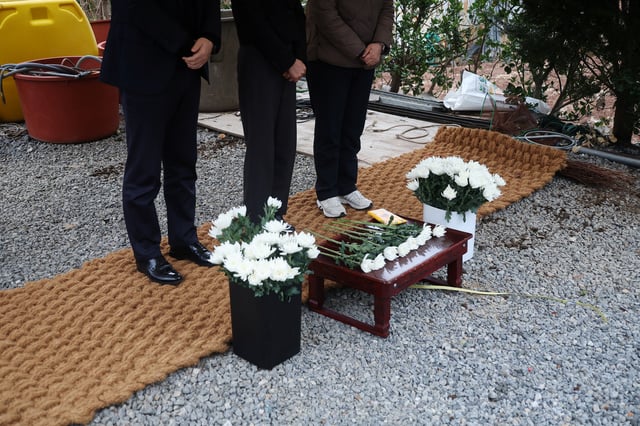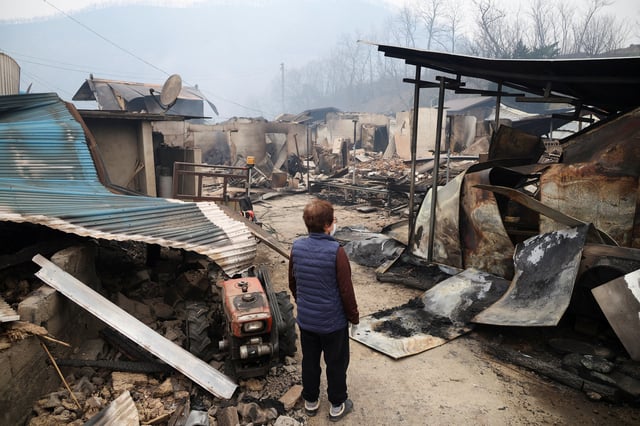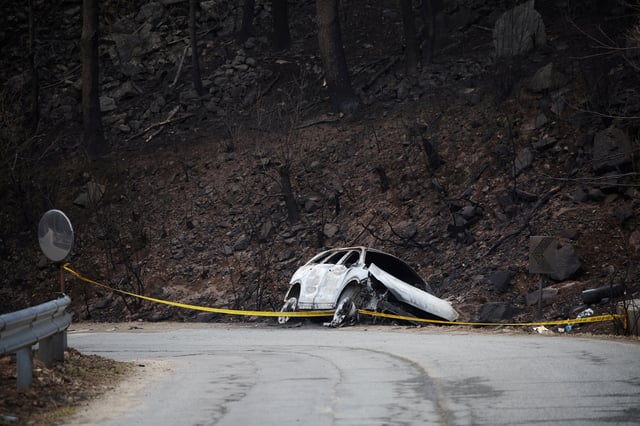Overview
- The wildfires, which began on March 21 in Uiseong County, have burned over 48,000 hectares, making them the largest in South Korea's history.
- Light rain and cooler temperatures have aided containment efforts, with 85% of the fires now under control, but flare-ups were reported in Andong on March 29.
- The disaster has claimed 29 lives, displaced over 30,000 residents, and destroyed thousands of homes, factories, and cultural heritage sites, including the 1,300-year-old Gounsa Temple.
- South Korea’s aging rural population has been disproportionately affected, with many victims and evacuees in their 60s and 70s, underscoring vulnerabilities in disaster preparedness.
- Government officials have pledged to overhaul wildfire response strategies, focusing on night-time firefighting capabilities and evacuation protocols for elderly populations.


